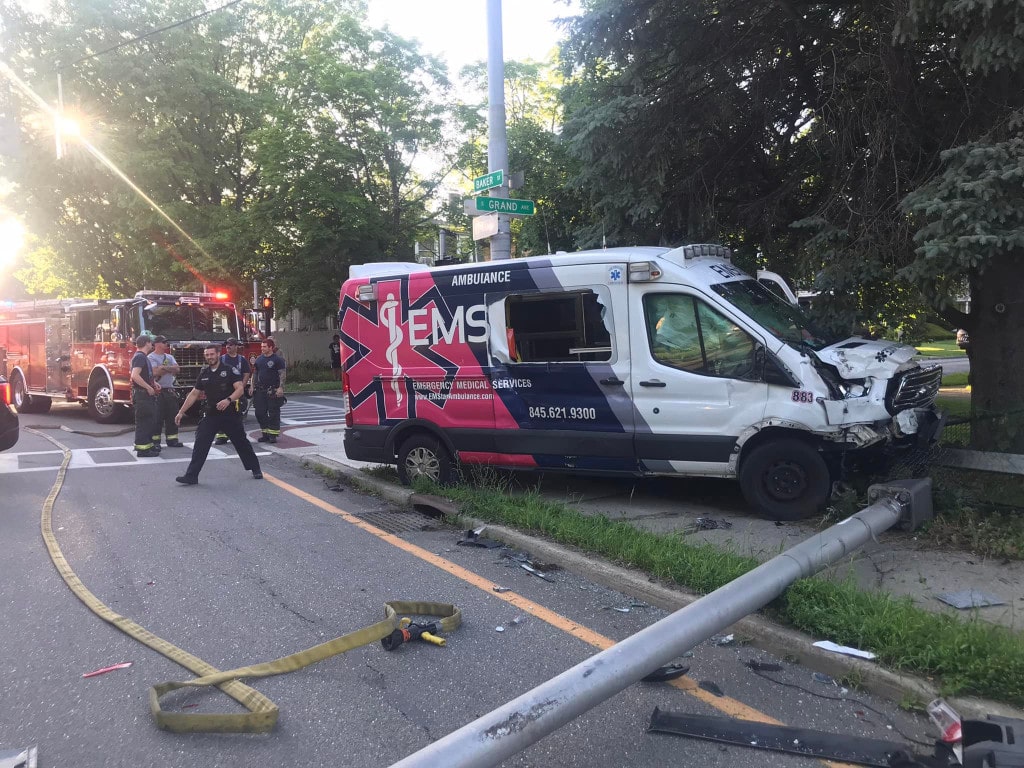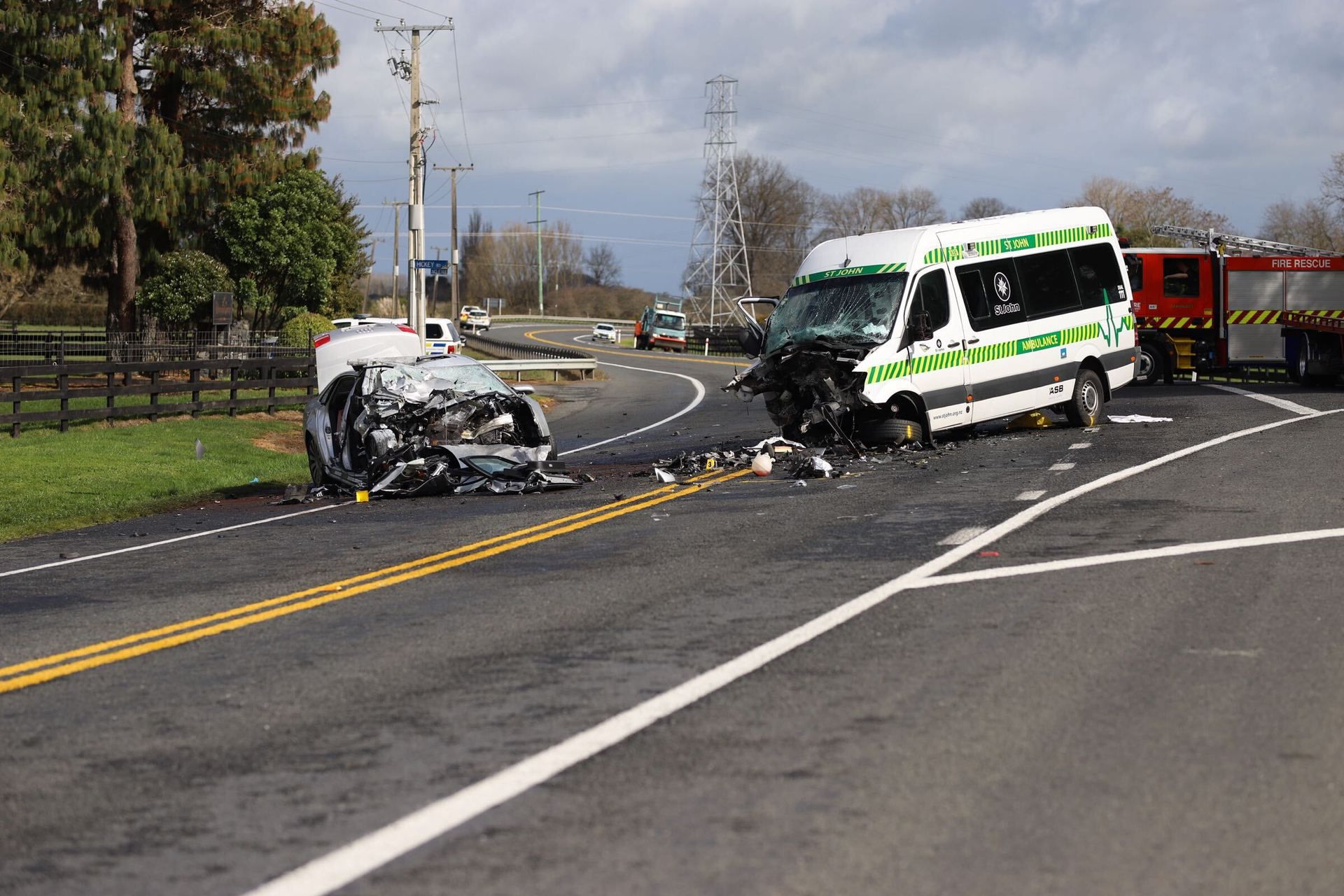Ambulance Accidents in the Highway: A Grave Concern for Public Safety
Whether you've been injured in an accident, are dealing with a personal injury claim, or facing another legal issue, Mendez & Sanchez APC is here to fight for you. Contact us today for a free, no-obligation consultation.
Call Us Now
Every day, emergency medical service (EMS) vehicles traverse our highways to save lives, providing a critical lifeline for those in need. However, a growing concern has emerged: the alarming rise in ambulance accidents in the highway. These accidents pose a significant threat not only to the occupants of the ambulance but also to other drivers and pedestrians. In this article, we delve into the causes, consequences, and preventive measures related to ambulance accidents in the highway.
Ambulance Accidents in the Highway: A Grave Concern for Public Safety
Ambulance accidents in the highway are a pressing issue that demands immediate attention. These incidents can lead to severe injuries, loss of life, and property damage. The high-speed nature of highway travel, combined with the urgency of emergency response, creates a potentially dangerous situation. Understanding the factors contributing to these accidents is crucial for formulating effective preventive measures.
Speeding: Racing Against Time?
Excessive speed is one of the leading causes of ambulance accidents in the highway. In the urgency to reach their destination promptly, EMS personnel often find themselves compelled to disregard speed limits. This recklessness, although motivated by noble intentions, increases the likelihood of collisions and compromises the safety of everyone on the road.
Distracted Driving: A Grave Mistake
In the era of smartphones and other technological distractions, even EMS personnel are not immune to the temptation of using their devices while driving. Responding to messages or phone calls diverts their attention from the road, making them vulnerable to accidents. It is essential for ambulance drivers to prioritize safety and refrain from any form of distracted driving.

Fatigue: An Invisible Enemy
The demanding nature of emergency medical services can take a toll on the well-being of EMS personnel. Long shifts, irregular working hours, and the constant pressure to respond promptly contribute to fatigue, which significantly impairs a driver's concentration and reaction time. Addressing fatigue through adequate rest periods and proper scheduling is crucial to prevent accidents.
Weather Conditions: Nature's Obstacle Course
Inclement weather conditions can turn a routine ambulance ride into a hazardous journey. Rain, snow, fog, or icy roads reduce traction and visibility, making it challenging to control the ambulance safely. EMS organizations must equip their vehicles with appropriate tires and train their personnel to navigate adverse weather conditions carefully.
Traffic Violations: Breaking the Law for Good?
In their quest to save lives, ambulance drivers may feel tempted to violate traffic rules, such as running red lights or overtaking other vehicles dangerously. While these actions may seem justifiable in the context of emergencies, they significantly increase the risk of accidents and can lead to severe consequences for all parties involved.
Causes of Ambulance Accidents in the Highway
There are several factors that contribute to ambulance accidents in the highway. It is essential to identify and address these causes to ensure the safety of everyone involved. Some key causes include:
- Distracted Driving: Ambulance drivers, like any other motorists, can become distracted while operating their vehicles. This distraction can result from mobile devices, in-vehicle technology, or external factors that divert their attention from the road.
- Fatigue and Stress: Emergency medical personnel often work long shifts, responding to numerous calls throughout the day. The demanding nature of their job can lead to fatigue and high levels of stress, impairing their judgment and reaction times.
- Traffic Conditions: Highways are notorious for heavy traffic congestion, especially during peak hours. Ambulance drivers must navigate through this congestion swiftly and safely, which can be challenging and increase the risk of accidents.
- Speeding and Reckless Driving: Due to the urgency of their missions, ambulance drivers may feel pressured to exceed speed limits and engage in reckless driving maneuvers. While their intentions are noble, these actions can have dire consequences if not executed with caution.
- Lack of Training and Experience: Proper training and experience are vital for ambulance drivers to handle the unique challenges they face on the highway. Insufficient training can lead to errors in judgment, poor decision-making, and difficulty adapting to adverse road conditions.
Consequences of Ambulance Accidents in the Highway
The consequences of ambulance accidents in the highway can be devastating for all parties involved. These include:
- Injuries and Loss of Life: Ambulance occupants, patients, other drivers, and pedestrians can sustain severe injuries or lose their lives in these accidents. The high speeds involved amplify the impact and increase the likelihood of severe outcomes.
- Property Damage: Collisions between ambulances and other vehicles often result in significant property damage. The cost of repairs and insurance claims can create financial burdens for all parties involved.
- Delays in Emergency Response: When an ambulance is involved in an accident, it not only impacts the individuals directly involved but also causes delays in emergency response. The injured party may experience prolonged waiting times for medical attention, jeopardizing their chances of survival.
- Psychological Impact: Witnessing or being involved in an ambulance accident can have long-lasting psychological effects on both the victims and the emergency personnel. The trauma experienced may hinder the ability of emergency responders to carry out their duties effectively in the future.
Ambulance accidents in the highway can have severe consequences. Patients being transported can suffer additional injuries or complications due to the accident, and EMS personnel can also sustain injuries. Other drivers and passengers on the road can also be injured or killed in the accident. In addition to physical injuries, ambulance accidents can also result in legal and financial consequences. The EMS agency, ambulance driver, and other parties involved may face legal action and financial penalties.

Prevention of Ambulance Accidents in the Highway
Ambulance accidents in the highway can be prevented by implementing several measures. Firstly, ambulance drivers should be adequately trained and certified. This will ensure that they are competent and knowledgeable in driving ambulances. Secondly, EMS personnel must follow strict guidelines regarding driving safety, including avoiding speeding, driving defensively, and avoiding distracted driving. Thirdly, EMS agencies must provide adequate rest periods for EMS personnel to prevent driver fatigue. Lastly, EMS agencies must ensure that their ambulances are well-maintained and equipped with the latest safety features.



